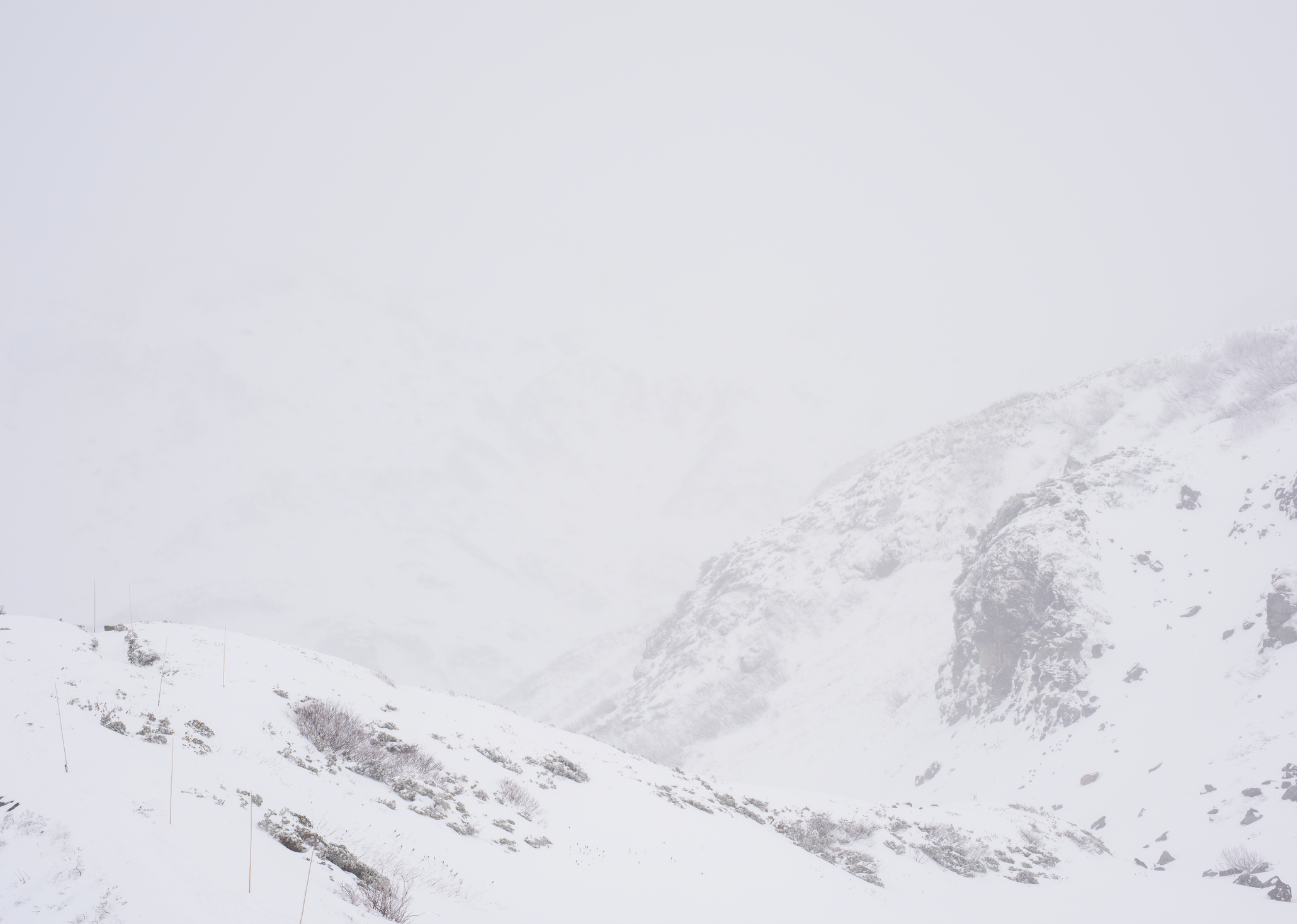Above a nature.

テラススクエアフォトエキシビションvol.25では3名の写真家と本展キュレーターが写真と対話をしながら、展示構成を考えてきた。会期が残り少なくなってきた今、あらためて作家たちにいくつか質問を投げかけてみた。最初の4つの質問は、キュレーターの加藤からの、残りの3つは、それぞれの作家から各作家への質問を追記とした。

野口花梨(写真家/出展作家)
Q1:「Above a nature」というタイトルをどのようにとらえ、そして、作品を選びましたか?
How did you take the title “Above a nature” and choose your work?
自然を常に変化し続けるものと捉え、それを超えるものという意味で、逆に長い時間変化していないものを撮ろうと考えました。7年前に亡くなった、新潟の祖父が趣味で描いていた絵の置いてあるアトリエを訪れ、記録しました。ここには祖父の死以降、私や祖母以外入ることはありません。ずっと変わらない光景の中に、そこに存在した人間の魂のようなものが見えました。その周辺の風景にも人と自然との交わりを感じ、その様子を写真にしました。
I thought of nature as something that is constantly changing, and in the sense of something that exceeds it, on the contrary, I thought of taking pictures of things that have not changed for a long time. I visited and recorded the atelier where there was a picture that my grandfather in Niigata, who died 7 years ago, drew as a hobby. Only me and my grandmother will not enter here after my grandfather’s death. In the scene that has never changed, I saw something like the human soul that existed there. I felt the interaction between people and nature in the surrounding scenery, and I took a photogtaph of it.
Q2:写真に興味をもつようになったきっかけを教えてください。
Please tell me how you became interested in photography.
昔から美術が好きだったこともあり、なんとなく入った高校の写真部で活動をするうちに、次第に写真が好きになっていきました。その頃は、町の職人さんなど、取材的な撮影をよくしていて、被写体のルーツや生き方を知ることが楽しみでした。
I’ve always liked art, so as I worked in the photography club of the high school I entered, I gradually came to like photography. At that time, I used to shoot interviews, such as craftsmen in the town, and I was looking forward to knowing the roots of the subject and how to live.

Q3:どんな時に、どんなことに気がついて写真を撮影しますか?また、写真で目指していることを教えてください。
When and what do you notice and take a photograph? Also, please tell me what you are aiming for in the photograph.
スナップは衝動的に、ポートレートは風を感じながら大胆に、風景写真はストレートに素直に、というように被写体によって意識を分けて撮影している気がします。今は難しい表現よりも、スっと心に入ってくるような、やさしい、安心感のある写真を目指しています。
I feel that snaps are taken impulsively, portraits are bold while feeling the wind, and landscape photos are straight and obedient, so on, and so on, I feel that I’m shooting with my consciousness separately depending on the subject. Now, rather than difficult expressions, I’m aiming for a gentle and secure photo that comes into my mind quickly.
Q4:普段使っている機材を教えてください。
Please tell me the equipment you usually use.
SONY α7markIIです。
SONY α7markII
Q5:日常のルーティンを教えてください。
Please tell me your daily routine.
お風呂で熱唱しています。
I’m singing passionately in the bath.
Q6:憧れの人、または好きなアーティストを教えてください。
Please tell me who you admire or your favorite artist.
写真家の中村ハルコさんです。写真集「光の音」を読んだ時、言葉にできないほどの感動がありました。
This is Haruko Nakamura, a photographer. When I read the photo book “Sound of Light”, I was so moved that I couldn’t put it into words.
Q7:あなたの写真におけるバイブル的なものはありますか?
What is the Bible in your photo?
好きな作家や作品は沢山ありますが、バイブル的なものはあまりないのかもしれません。
There are many favorite writers and works, but there may not be many bible ones.
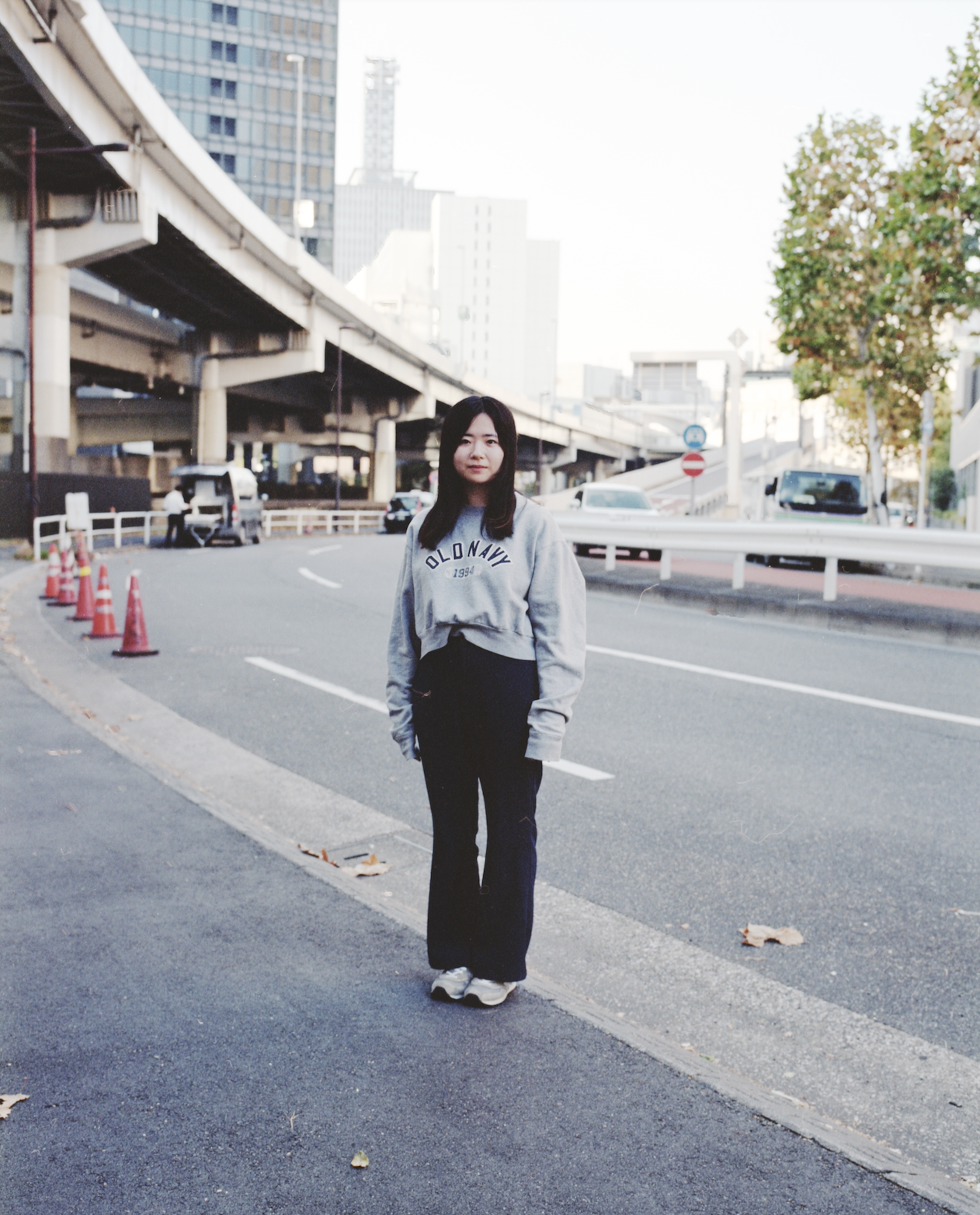
堀裕貴(写真家/出展作家)
Q1:「Above a nature」というタイトルをどのようにとらえ、そして、作品を選びましたか?
How did you take the title “Above a nature” and choose your work?
普段から何気なく使っている「自然」という概念に対し、自分自身の実際の関わり方や考え方を元に作品を選んでいます。
文明社会との対比項として使用される「自然」を考えた際に、手付かず、ありのままといった質感が先行してくることに気が付きました。
ただ、実際にそういった状況はあまりあり得ないように思えました。
では、自分が普段から接している「自然」とは一体何なのか?
僕にとってはそれは「道」と殆ど一緒であるというのが結論で、自分自身の体験を振り返った際に「道」のない自然を想起することができなかったのです。
これまで自分があまり深く考えずに捉えていた「自然」への認識を整理する意味も込めて、「道」をモチーフとして、今回の展示作品としています。
For the concept of “nature” that I usually use casually, I choose works based on my own actual relationship and way of thinking. When I thought about “nature” used as a contrast with civilized society, I noticed that the texture of untouched and as it is precedes me. However, it seemed that such a situation was actually not possible. So, what exactly is the “nature” that you usually interact with? For me, it was the conclusion that it was almost the same as the “way”, and I couldn’t recall the nature without the “road” when I looked back on my own experience. This exhibition work uses “road” as a motif to organize the meaning of the perception of “nature” that I have grasped without thinking too deeply so far.
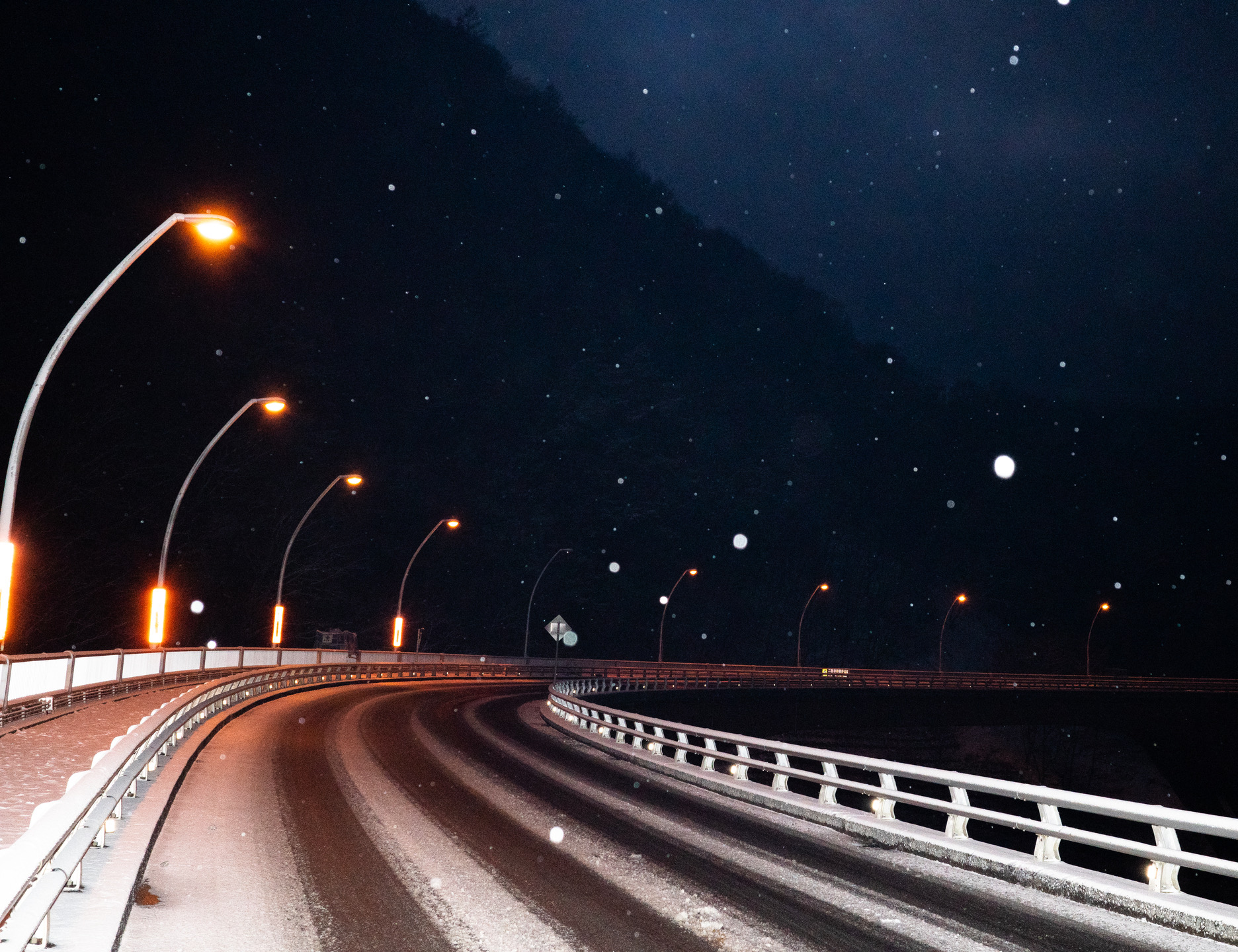
Q2:写真に興味をもつようになったきっかけを教えてください。
Please tell me how you became interested in photography.
大学2年生の頃、当時よく一緒に過ごしていた友人が写真を始めたことをきっかけに、表現手段としての写真の存在を知りました。
When I was in the second year of college, I learned about the existence of photography as a means of expression when a friend who I used to spend a lot of time with at that time started taking photographs.
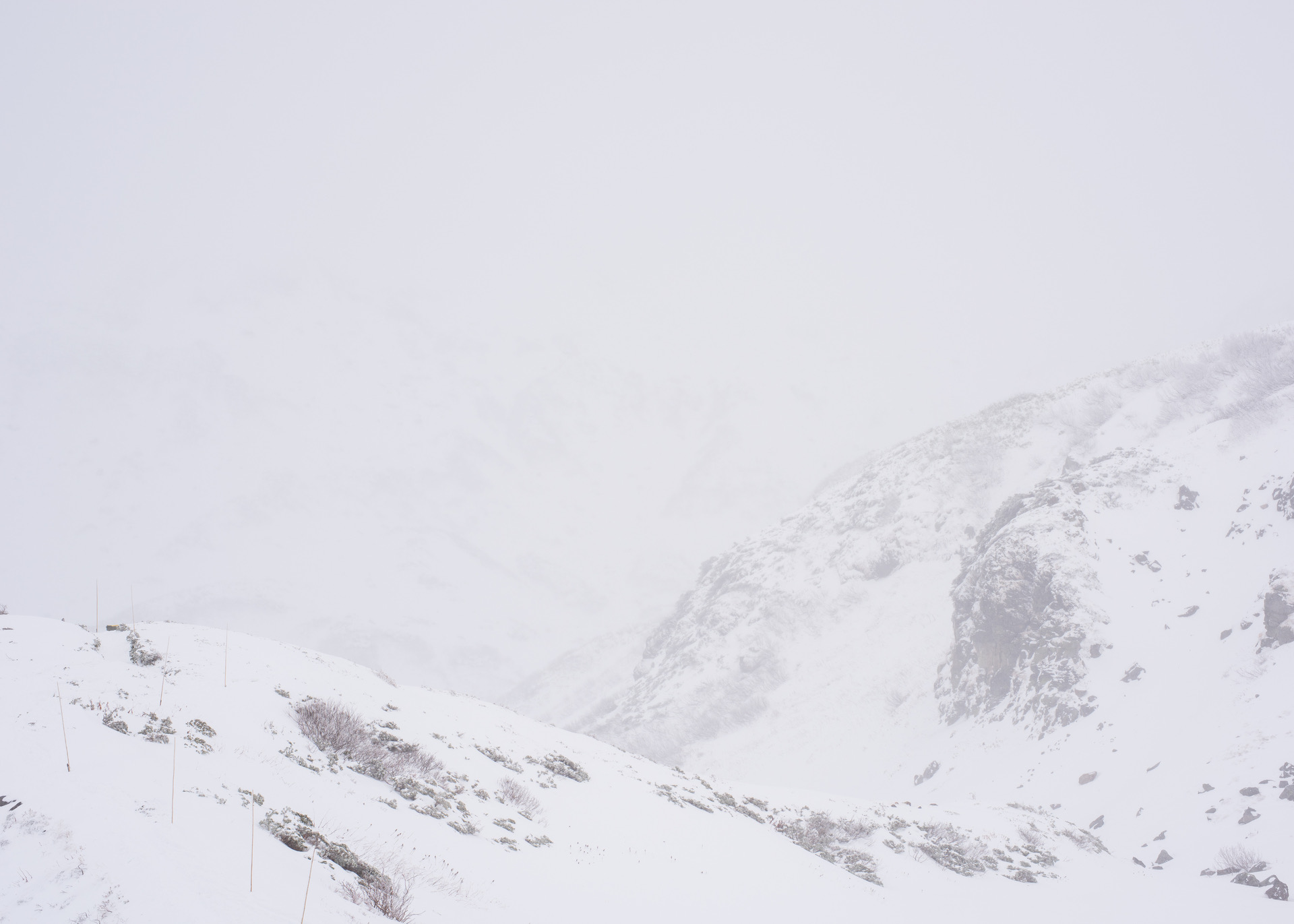
Q3:どんな時に、どんなことに気がついて写真を撮影しますか?また、写真で目指していることを教えてください。
When and what do you notice and take a photograph? Also, please tell me what you are aiming for in the photograph.
写真の中にある風景が、誰かにとっても切実な瞬間であってほしいと思っています。
写真を見ていて、その光景を全く経験していないにも関わらず、それを目の当たりにしているのは自分自身だと感じてしまう。
当事者性と普遍性が混じり合う瞬間を捉えていきたいです。
I want the scenery in the picture to be an earnest moment for someone. Even though I’m looking at the picture and haven’t experienced the scene at all, I feel that I’m the one who is witnessing it. I want to capture the moment when the parties and universality mix.
Q4:普段使っている機材を教えてください。
Please tell me the equipment you usually use.
ここ最近までは中判のフィルムカメラでした。
今は中判のデジタルカメラをメインに使用しています。
その時々の身体感覚に適したものを選びます。
Until recently, it was a medium format film camera. Now I’m mainly using a medium-sized digital camera.Choose the one that is suitable for the physical sensation at that time.
Q5:日常のルーティンを教えてください。
Please tell me your daily routine.
シガー・ロスの曲を聴くこと。
Listening to Cigar Ross’s songs.
Q6:憧れの人、または好きなアーティストを教えてください。
Please tell me who you admire or your favorite artist.
ロニ・ホーンです。去年、箱根のポーラ美術館で開催されていた展覧会「水の中にあなたを見るとき、あなたの中に水を感じる?」を見て好きになりました。朗読作品が特に印象に残っています。
It’s Roni Horn. Last year, an exhibition held at the Pola Museum of Art in Hakone, “When I see you in the water, do I feel the water inside you?” I fell in love with it when I saw it. The reading work is particularly impressive.
Q7:あなたの写真におけるバイブル的なものはありますか?
What is the Bible in your photo?
今はまだないです。身の回りで作品制作をしている人たちの制作の姿勢や考え方に日々刺激をもらっています。
I don’t have it yet. I am inspired every day by the production attitude and way of thinking of people who are making works around me.

渡邉りお(写真家/出展作家)
Q1:「Above a nature」というタイトルをどのようにとらえ、そして、作品を選びましたか?
How did you take the title “Above a nature” and choose your work?
タイトルを聞いた当初は、森だとか海だとか壮大な自然を思い浮かべていました。ですが、キュレーターの加藤さんから、いわゆる「自然=nature」というものに加えて、時を重ねてそこに溶け込んでいる物や、人がする違和感を感じさせない振る舞いに対しても日本語では「自然」ということがあるなど、言葉の意味での「自然」というもの自体が示すものは実は多様で、作家それぞれ捉え方が違ていてもよい、ということを聞きました。その上で本展における「自然」という概念を自分なりに再認識して取り組みました。
壮大な物だと自分としても作品自体に共感をもちにくいし、だから、自分の関わりのあるものや、散歩をしていて綺麗な物を見つけたときのような感覚で作品を選んでいきました。
When I first heard the title, I thought of magnificent nature such as the forest and the sea. However, from Mr. Kato, the curator, in addition to the so-called “nature = nature”, there is also “nature” in Japanese for things that have melted into it over time and behaviors that do not make people feel uncomfortable. I heard that what “nature” itself shows in the sense of words is actually diverse, and each writer may have a different way of thinking. On top of that, I re-recognized the concept of “nature” in this exhibition in my own way and worked on it. If it is a magnificent thing, it is difficult for me to sympathize with the work itself, so I chose the work as if I found something related to me or something beautiful while taking a walk.

Q2:写真に興味をもつようになったきっかけを教えてください。
Please tell me how you became interested in photography.
元々は被写体を自分がしていた経験がきっかけです。
当時、自分では、あまり写真を撮っていなかったのですが、撮っていただいた方に現場に呼んでいただいたことも、写真に興味を持ったきっかけの一つです。
また、家庭環境がいわゆるサラリーマン家庭とは違い、クリエイティブに近い環境に幼い頃からいたので興味はずっとありました。さまざまな方のご縁があって、今写真をやっています。
写真をはじめたここ2年くらいで、作家や写真集などをみてドンドンのめり込んだ感じです。
Originally, it was triggered by the experience of doing the subject myself. At that time, I didn’t take many photograph myself, but the person who took it invited me to the site is one of the reasons why I was interested in photography. Also, unlike the so-called salaryman family, the home environment has been close to creative since I was young, so I have always been interested in it. I have a lot of connections with various people, so I’m taking photograph now. It’s been about two years since I started taking photographs, and I feel like I’m really into it when I see writers and photo books.
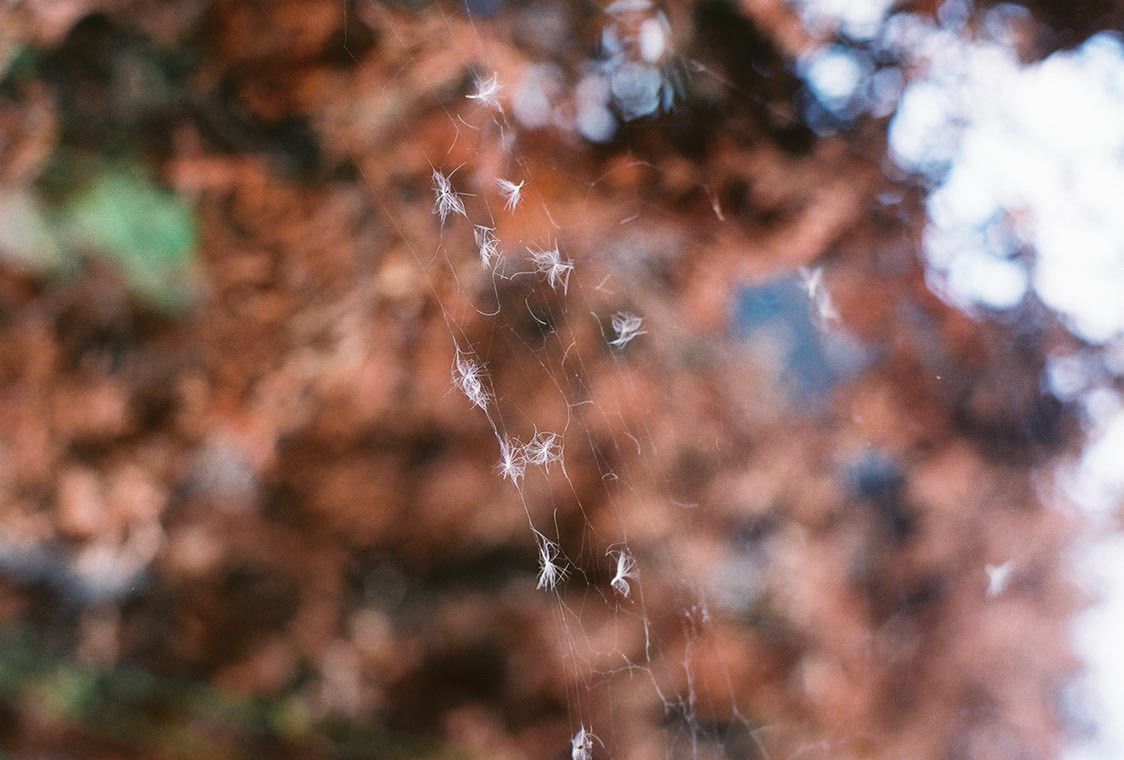
Q3:どんな時に、どんなことに気がついて写真を撮影しますか?また、写真で目指していることを教えてください。
When and what do you notice and take a photograph? Also, please tell me what you are aiming for in the photograph.
小さい頃から杞憂するタイプでした。写真は不安を和らげてくれたり、自分の悪い空想を新しい発見へと変換してくれる道具だと思っています。
単純に光が綺麗だというような理由で撮ることもありますが、撮れば撮るほど単純な動機というものが少なくなっているような気もしています。
何かと理由づけたいのでしょうか。わかりません。
ただ一つ言えるのは難しい事は正直わからない、ということです。ひたむきに長く続けられればなと思っています。
今年は、長年の空想を写真本などの形にできればと思っています。
I’ve been an unfounded type since I was little. I think photography is a tool that relieves anxiety and transforms my bad fantasies into new discoveries. Sometimes I take photograph simply because the light is beautiful, but I also feel that the more I take photograph, the less simple motives there are.Do you want to give a reason? I don’t know. The only thing that is difficult to say is that I honestly don’t know. I hope I can continue to do it for a long time. This year, I hope to make my long-standing fantasy into a photo book.
Q4:普段使っている機材を教えてください。
Please tell me the equipment you usually use.
メインは手馴染みがいいからという理由でニコンF3を使っています。ライカM3も使いますが、ゆっくり撮影したい時にしか使いません。
佐内さんや元々好きな荒木さんの影響もあって、風景は中判カメラの6×7で撮る機会が増えました。最近では、pentax optioやmark4にオールドレンズをつけるなどしてデジタルの撮影も積極的に行なっています。
I’m using Nikon F3 because the main one is familiar. I also use the Leica M3, but I only use it when I want to shoot slowly.Due to the influence of Mr. Sanai and Mr. Araki, who originally liked it, there were more opportunities to take photograph of the scenery with a 6×7 medium format camera. Recently, we are also actively shooting digitally by attaching old lenses to pentax optio and mark4.
Q5:日常のルーティンを教えてください。
Please tell me your daily routine.
よく歩きます。夜か朝に梅昆布茶か紅茶を飲みます。それと、寝ることを1番大切にしているので、寝られる時は22時には寝ています。
I walk a lot. I drink plum kelp tea or tea at night or in the morning. Also, sleeping is the most important thing, so when I can sleep, I sleep at 22 o’clock.
Q6:あなたの写真におけるバイブル的なものはありますか?
What is the Bible in your photo?
大橋仁さんの「目のまえのつづき」です。
It’s Hitomi Ohashi’s “Continue in front of the eyes”.
Q7:憧れの人、または好きなアーティストを教えてください。
Please tell me who you admire or your favorite artist.
一番影響受けている人は、漫画家のつげ義春です。自分の暗さを作品にしてもいいんだと背中を押してくれた人だと思っています。あとは、ウェス・アンダーソンなど子供を題材に作品を作っている人の無邪気さとか、そういったものにずっと影響は受けています。
The person who is most affected is the manga artist Yoshiharu Tsuge. I think he’s the one who pushed me to make my darkness into a work. Also, I have been influenced by the innocence of people who make works based on children such as Wes Anderson.

加藤孝司(テラススクエアフォト・キュレーター/ジャーナリスト/写真家/出展作家)
Q1:「Above a nature」というタイトルをどのようにとらえ、そして、作品を選びましたか?
How did you take the title “Above a nature” and choose your work?
自然を背景にもったものづくりの現場を取材で訪れることが多くあります。その際に感じるのは、自然と人間の繋がりのあり方です。人間は自然に依拠した存在で、もちろん自然の一部ですが、豊かな自然に魅せられながらも、自然の前では人間存在の無力さを感じることも少なくありません。いわゆる「自然」や、自然の一部である人間がつくった都市の造形を前にしても、それら自然に対峙した時の「越えられなさ」をテーマに普段から写真を撮っている気がします。
I often visit the site of manufacturing with nature in the background for interviews. What I feel at that time is the way of connection between nature and humans. Human beings rely on nature, and of course they are part of nature, but while being fascinated by rich nature, they often feel the helplessness of human existence in front of nature. Even in the face of the so-called “nature” and the shape of the city created by humans who are part of nature, I feel that I usually take photograph on the theme of “unremeacity” when confronting those nature.

Q2:写真に興味をもつようになったきっかけを教えてください。
Please tell me how you became interested in photography.
最初は、高校生の時にみたバウハウス、エド・ヴァン・デル・エルスケンやハンス・ベルメールなどの写真です。その後、1960年前後の現代美術作家、高松次郎、赤瀬川原平、ナム・ジュン・パイクらの作品を記録した写真や映像、ゴダールやアラン・レネの映像作品、「都市住宅」という雑誌に掲載されていたコンペイトウ、遺留品研究所の写真を使った都市のリサーチなどを好んでみるようになりました。その後、1990年から2000年頃に、著名性と匿名性を行き来するように、ファッション誌やサブカルチャー誌で活躍する日本の写真家たちの作品をリアルタイムでみて興味を持ちました。
The first is photos of Bauhaus, Ed Van der Elsken and Hans Belmer that I saw when I was in high school. After that, photos and videos that recorded the works of contemporary artists around 1960, Jiro Takamatsu, Hirahira Akasegawa, Nam Jun Pike, and other works of Godard and Alain Renet, Konpeito, which was published in a magazine called “Urban Housing”, and the legacy I’ve come to like city research using photos from the product research institute. After that, from 1990 to 2000, I was interested in seeing the works of Japanese photographers active in fashion magazines and subculture magazines in real time as if they were going back and forth between fame and anonymity.
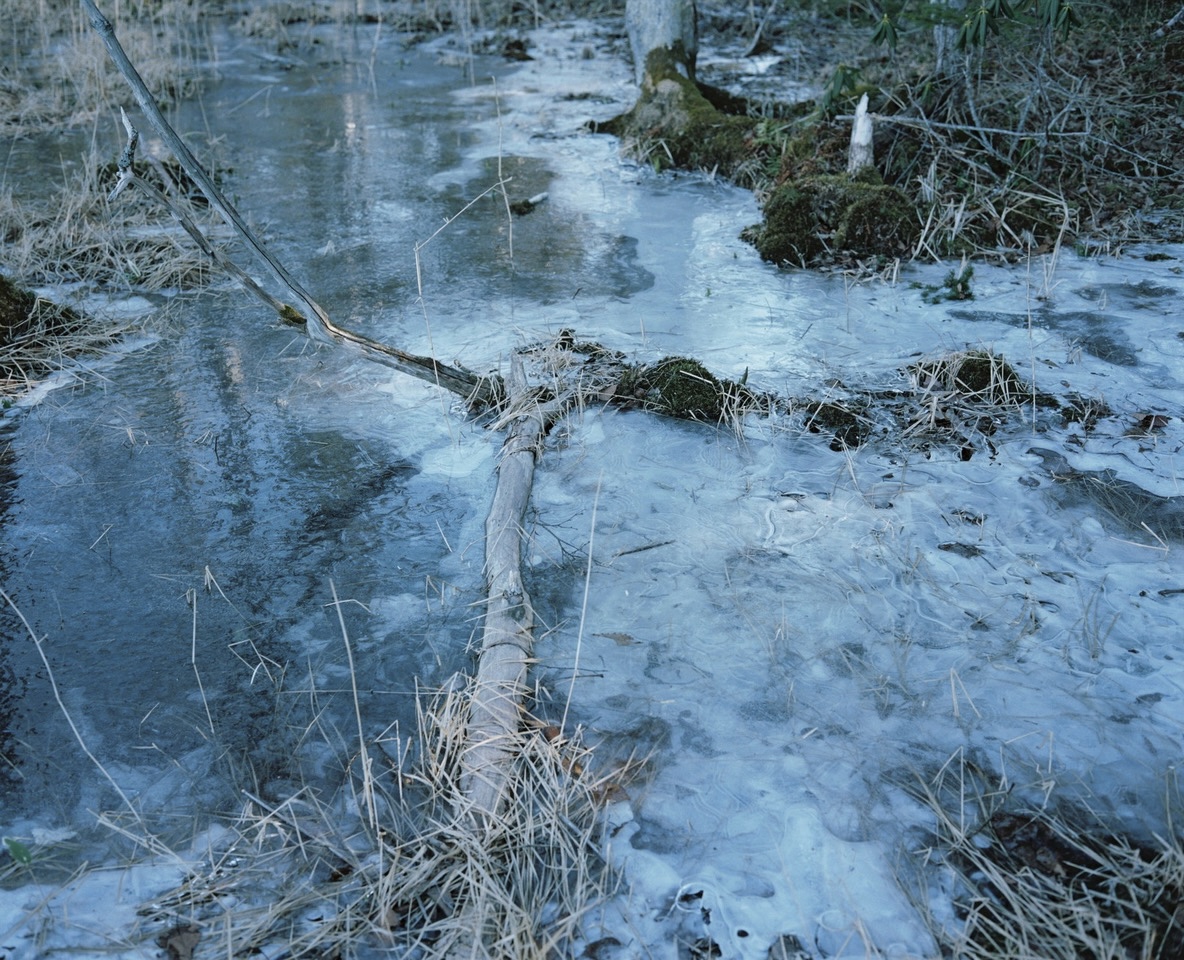
Q3:どんな時に、どんなことに気がついて写真を撮影しますか?また、写真で目指していることを教えてください。
When and what do you notice and take a photograph? Also, please tell me what you are aiming for in the photograph.
目的をもってカメラを持って、写真を撮ることが多いです。もちろん、普段からカメラを持ち歩いて目の前にあるものに反応して直感的に写真を撮ることもあります。いずれも、全体でみたときには、ひとつのイメージになるような、多様な側面を持ちえるような写真が撮れたらとは思っています。
I often take photograph with a camera with a purpose. Of course, I sometimes carry a camera with me on a regular basis and take photograph intuitively in response to what is in front of me. In both cases, when I look at it as a whole, I would like to take a picture that can have various aspects that will be one image.
Q4:普段使っている機材を教えてください。
Please tell me the equipment you usually use.
近年のメインはプラウベルマキナ67、ライカMP6+ズミルックス50mm、デジタルはライカM10+ズミルックス50mmを使っています。スナップでも、三脚を立てて撮ることが多いです。
In recent years, the main uses Plough Bell Makina 67, Leica MP6 + Summilux 50mm, and Digital uses Leica M10 + Summilx 50mm. Even with snaps, I often take pictures with a tripod up.
Q5:日常のルーティンを教えてください。
Please tell me your daily routine.
お茶を飲むことです。
It is to drink tea.
Q6:憧れの人、または好きなアーティストを教えてください。
Please tell me who you admire or your favorite artist.
これまで出会ったたくさんのアーティストに影響を受けています。日本の写真家に限定すると、川島小鳥さん、今井智己さん、小野啓さん、若い方ですと、トヤマタクロウさん、石田真澄さんも好きです。でも、本当にたくさんいます。
I’m influenced by many artists I’ve met so far. If you limit it to Japanese photographers, Kotori Kawashima, Tomoki Imai,Kei Ono, and young people, Takuroh Toyama and Masumi Ishida.But there are really a lot.
Q7:あなたの写真におけるバイブル的なものはありますか?
What is the Bible in your photo?
牛腸茂雄さんの「見慣れた街の中で」です。
It’s “Familiar Street Scenes” by Shigeo Gocho.
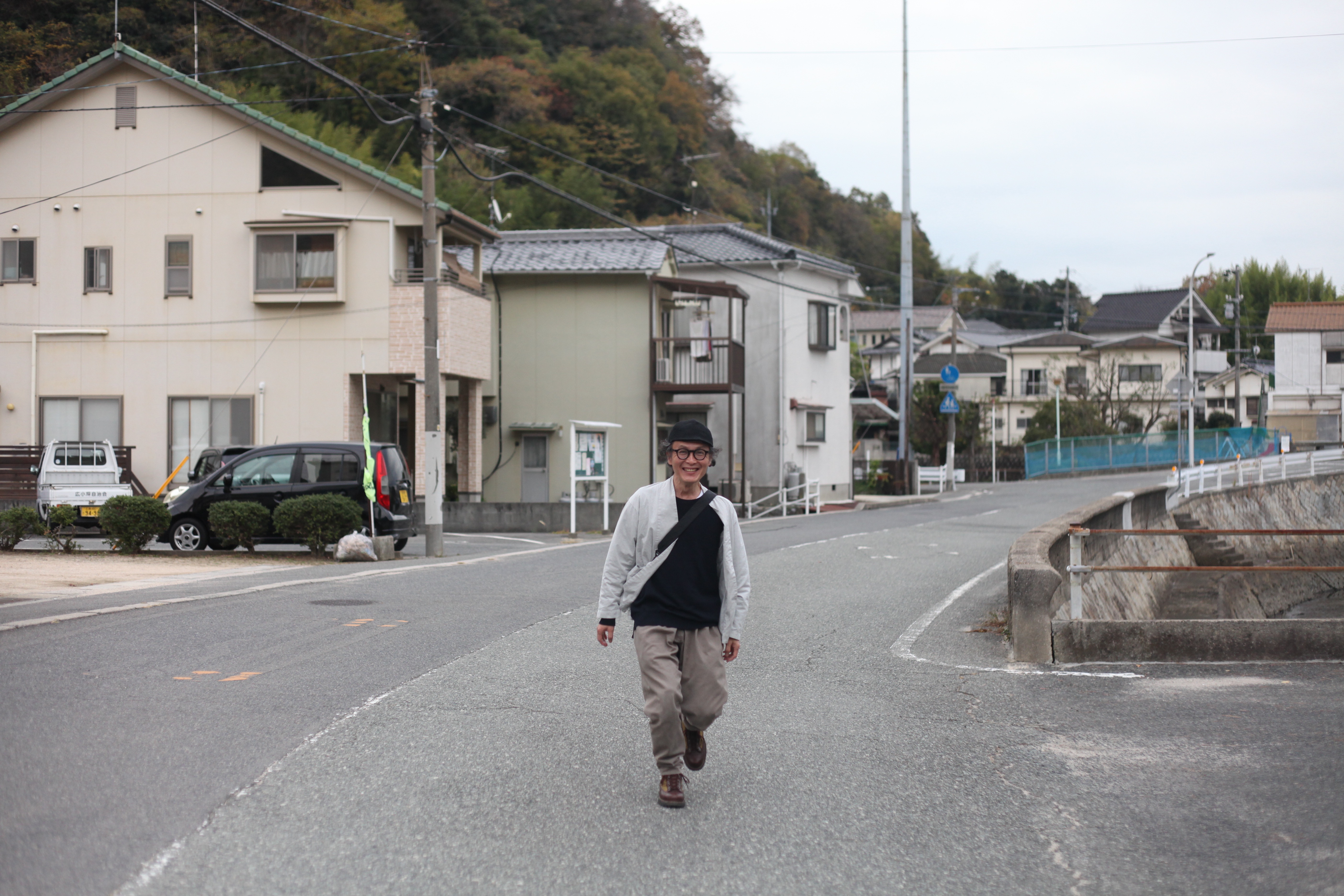
- テラススクエアフォトエキシビションVol.25「Dialogue with photography #2 Above a nature 」
- 住所: 千代田区神田錦町3-22 テラススクエア 1F エントランスロビー
- 開催日時: 2022年11月21日(月)〜2023年2月17日(金) / 8:00~20:00(最終日は18:30までとなります)
- 休館日: 土曜・日曜・祝日・年末年始 入場無料

- #88
- #Adam Ianniello
- #Agnieszka Sosnowska
- #ART
- #Bryan Schutmaat
- #Hiroshima
- #Interview
- #JENN KANG
- #Johanna Tagada Hoffbeck
- #JohannaTagadaHoffbeck
- #Kanadehamamoto
- #Kei Ono
- #Masahisa Fukase
- #Masato Ninomiya
- #Matthew Genitempo
- #Ohenro
- #review
- #Shota KONO
- #ShotaKONO
- #Takashi Kato
- #Thomas Boivin
- #Tokushima
- #アユニ・D
- #アート
- #インタビュー
- #ジョアンナ・タガダ・ホフベック
- #トマ・ボワヴァン
- #フォト
- #三部正博
- #井崎竜太朗
- #今井智己
- #内藤礼
- #写真
- #加藤孝司
- #堀 裕貴
- #小野啓
- #山口息吹
- #山本康平
- #岡崎果歩
- #映像
- #本多康司
- #根本絵梨子
- #池谷陸
- #池野詩織
- #渡邉りお
- #渡邊りお
- #温陽民族博物館
- #笠原颯太
- #編集長日記
- #諏訪万修
- #野口花梨
- #長田果純





